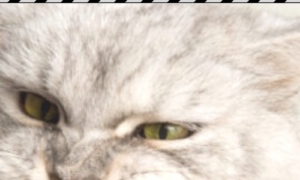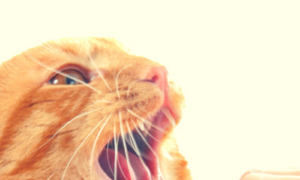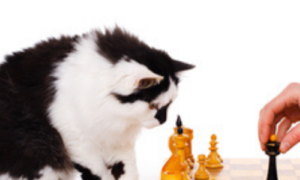 Amy Morgan of Brooklyn, New York, first knew that her calico cat Ruki loved her after he’d been living in her home for about two weeks. “I was in bed, and out of the corner of my half-opened eye, I saw him patiently waiting for me to wake up. The second I moved, he jumped on top of me, purring and kneading my chest wildly. Ever since, he’s done that every morning. It’s a great way to wake up.”
Amy Morgan of Brooklyn, New York, first knew that her calico cat Ruki loved her after he’d been living in her home for about two weeks. “I was in bed, and out of the corner of my half-opened eye, I saw him patiently waiting for me to wake up. The second I moved, he jumped on top of me, purring and kneading my chest wildly. Ever since, he’s done that every morning. It’s a great way to wake up.”But do cats love? And do they show it by kneading? “Absolutely,” says Jackson Galaxy, a Redondo Beach, California-based cat behaviorist. “A friend of mine says it best: cats are the masters of detached love. She’s talking about how cats can seem aloof and unfeeling. They express love in ways that baffle us.”
Galaxy decodes seven cat behavior signals of l’amour.
1. Grooming
Grooming is the first way that kittens experience care. Mothers groom their kittens from birth, and so licking and being licked become associated with the serenity of being with mom. “Litter mates as they grow older, if they’re adopted together, will groom each other for life,” says Galaxy. If your cat is licking you, it’s a sign of its affection.
2. Purring
A kitten is first guided to its mother’s nipples by her purr. As a result, purring is associated with milk and the feeling of satisfaction. And kittens purr back. “It’s almost like a Marco Polo type of game: call and response. It’s life affirming to them,” says Galaxy. “There’s debate as to what the purr signifies later in a cat’s life, but we do know they purr to sooth themselves — the purring lowers their heart rate.” If your cat is not injured or stressed, purring in your presence is likely related to feeling cared for by you, just as it was cared for by its mother.
3. Rubbing
Cats show affection to other cats, dogs and humans by rubbing against them. (Rubbing includes paw kneading, as in the case with Morgan’s calico.) Says Galaxy, “When your cat puts its scent on you, it’s saying something like, ‘You and I belong together because I smell you on me and you smell me on you.’ It’s a scent complement.” Kneading is also a throwback to kittenhood, when a kitten kneads its mom’s teat in order to stimulate the flow of milk. Allowing the rubbing is essential to your relationship with your cat, and you won’t smell a thing.
4. Mock Spraying
Male cats spray concentrated urine when claiming territory. In claiming you, your male cat may act as if he is spraying — backing up toward you with a quivering tail — but will not actually produce a spray. “They have so many scent glands to rub, they don’t need to spray us,” says Galaxy. Unfortunately for their human caretakers, an insecure cat may also show love by urinating in its owner’s bed. “My clients sometimes mistake this for aggression. It’s actually a compliment.”
5. Gumming
Is Fluffy rubbing its gums on you? Yep, that’s one more way in which your cat may attempt to blend its scent with yours.
6. Blinking
It’s been referred to as “the cat I love you.” This visual signal usually consists of a stare, followed by a blink, an open eye, and then a soft second blink. “It’s actually a sign of trust, like showing you its belly,” says Galaxy, who mimics the blink with cats he works with when trying to gain their confidence. “It’s a form of communication I know works. Do it a few times with your own cat. They’ll begin returning it to you.”
7. Gifting
When your cat brings you a dead mouse, it’s not a present in the traditional sense. “What seems like an obvious sign of affection is something that comes from a dog or human-centric viewpoint. When a cat brings a dead mouse home, they’re saying, ‘I bring this thing to my safe place.’ It’s more a demonstration that your cat feels supremely safe in the home you share. That, too, is a compliment.”
To return your cat’s affection, Galaxy recommends following its lead. “Experiment. Present your hand and see where your cat forces it. You’ll find out what your cat likes to feel.” Your cat will discover that people, too, are capable of feeling love.
Darcy Lockman is a Brooklyn, N.Y.-based freelance writer and frequent contributor to The Daily Cat. Her work has appeared in publications such as the New York Times and Rolling Stone.





